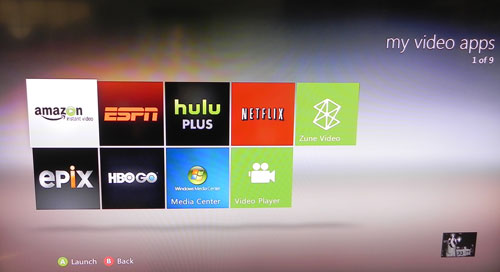Discussion on the interwebs about the much desired HBO Go has heated up again with the launch of takemymoneyhbo.com.
Longtime readers of FoTV will remember my post on Why HBO won’t sell you HBO Go. Where my basic premise is that the economics just don’t make sense for HBO.
In the twitterverse I got a reply from Zach Seward of Cordcutter where he asks:
“Do you see a future in which HBO’s customers are *both* cable companies and individuals rather than either-or?”
I do see this in the future, but IMHO we have a big transition to go through for both the consumer and the media industrial complex.
The next step will be Over-The-Top (aka OTT) Television. OTT has a few meanings, depending to whom you talk to. Some say OTT is any video delivered via broadband. To me, this a worthless definition. Everything will be delivered via broadband whether Youtube, Netflix, or Facebook videos. A clearer defintion is needed.
To me, OTT is the replication of an existing cable/satellite service with live video, DVR capability, and VOD capability delivers via broadband accross a variety of platforms running applications. The application environment is widespread on smart TVs, Blu-ray players, PS3 and Xbox 360 gamin consoles, and specialty devices like Roku and Apple TV. Imagine being able to have a full cable TV experience via an app downloaded to your XBox 360 without the need for any contract, truck roll, or hardware installation.
Once this type of OTT appears, the real battle over video distribution will take place. There are many things that will need to get worked out as this happens, net neutrality, broadband QoS, keyboard entry via remotes, authentication and localization, and the embrace of OTT across the chasm to the early majority. Describing this is probably a whole blog post in itself.
But once a significant portion of viewers are in the broadband OTT environment, the tipping point will have been reached. (Am I using enough industry consultantese?) At this point, with the majority of issues worked out, the market for a la carte content like HBO Go will be viable and likely available. It will arrive with much wailing ang gnashing of teeth, FUD, and declarations of the ‘end of media’, but it will arrive.
To jump from today’s environment where tech saavy people are constantly called by family to get “the Netflix” working on their Walmart Blu-ray player and have to explain the concept of getting internet access to the living room to people with VCRs still flashing 12:00 is simply a bridge too far.
We needed VCRs to get in place the business deals, consumer understanding, infrastructure to enable DVDs, true a la carte video distribution will require OTT to become more than a minor niche inhabited by enthusiasts.
Yes, I know this doesn’t make people happy to read this. I understand. When I got my first Nokia 3650 in 2002, I knew the future was in the smartphones, but why did they have to suck so much in the beginning? Ten years later and the world is completely different. We had to step through wireless data improvements, financial transaction models, application environments, and an upending of the traditional phone carrier relationship to get here. Try to remember that the first iPhone didn’t have 3rd party apps. It took a year of working out the technical details, building backends, and developing business relationships to enable the Apple App Store. It’s easy to forget all the baby steps it took to get to today’s mobile nirvana.
So to answer Zach’s original question, yes, we’ll get there where media companies have direct relationship with consumers, but it won’t until a lot more blood is shed in the distribution wars, product launches and failures, and endless tweets are typed with clenched fists.

